Mercedes-Benz has revealed a heavily revised version of the Smart Fortwo ED boasting greater performance and additional range among other refinements to the compact rear-wheel drive plug-in electric car.
Planned to make its world premiere at next month’s Frankfurt motor show, the so-called phase three Fortwo ED receives a completely new driveline consisting of a more powerful brushless electric motor supplied by Bosch and a higher capacity lithium ion battery.
Peak power increases by 33bhp over the phase two Fortwo ED from 40bhp to 73bhp, with nominal power up by 20bhp from 27bhp to 47bhp. Torque has also risen by 7lb ft to 96lb ft. The increase in reserves cuts the new car’s 0-37mph (60km/h) time by 1.5sec to a claimed 5.0sec. The 0-62mph(100km/h) time has also been reduced to under 13.0sec, while top speed increases from 62mph to 75mph.
The new electric motor draws energy from a new lithium ion battery up in capacity from the previous 14kWh Telsa produced unit to 17.6kWh. The new battery is produced by German-based Deutsche Accumotive, a joint venture between Mercedes-Benz parent company Daimler and German alternative energy specialist Evonik.
The increased capacity is claimed to bring about a 16-mile increase in range at 87 miles. Mercedes-Benz put the nominal recharge time at eight hours on a standard mains socket or under an hour with the on-board 22kW high capacity charger.
The new Smart Fortwo ED is planned to be sold in up to 30 markets worldwide – up from 18 markets with the phase two version currently on sale in the UK.
Production is also set to be boosted from a limited 2000 with the phase two version to over 10,000 with the new phase three Fortwo ED.
Meanwhile, Smart has announced plans to add a new plug-in electric bicycle to its line-up.
The new two wheeler, called the ebike and to be revealed in what insiders describe in near-to-production form at next month’s Frankfurt motor show, uses a 250 watt brushless electric hub motor mounted within the rear 26-inch wheel and produced by BionX to supplement the rider’s muscle power.
A handlebar-mounted control unit offers four different levels of electric assistance with energy supplied by a 400Wh lithium ion battery mounted within the frame.

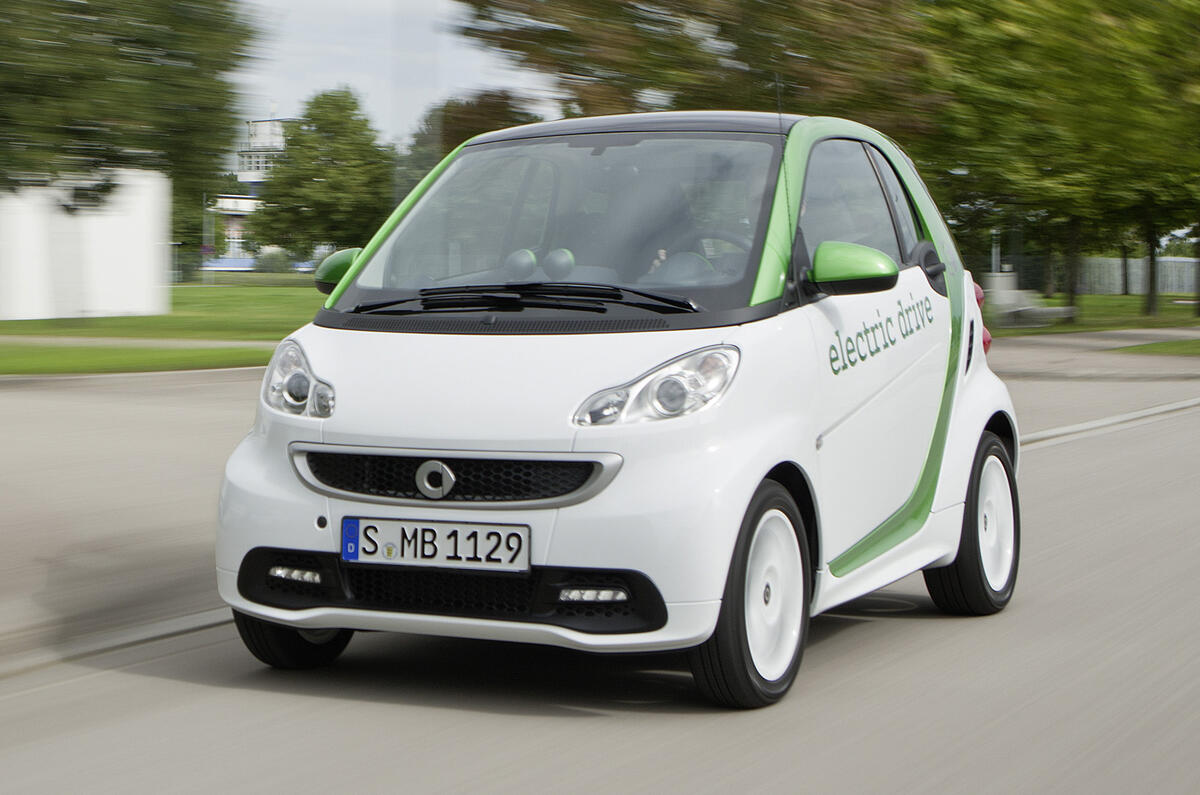
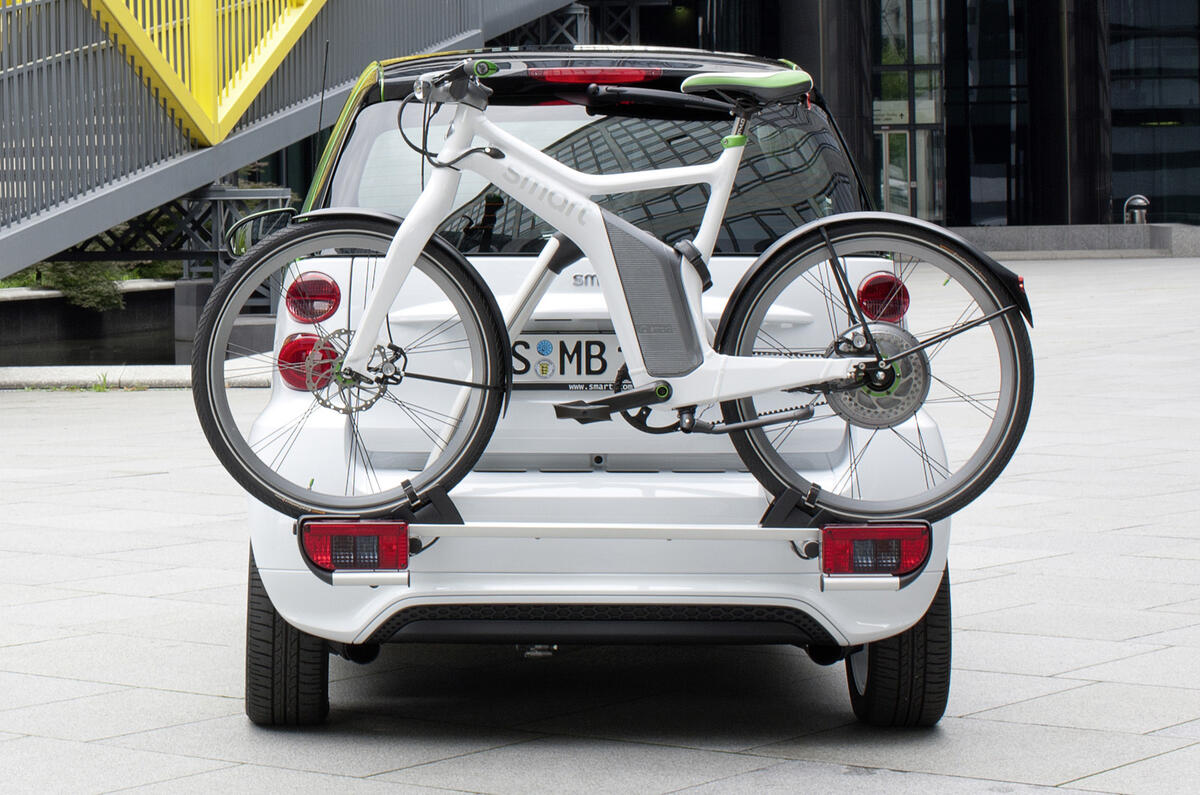
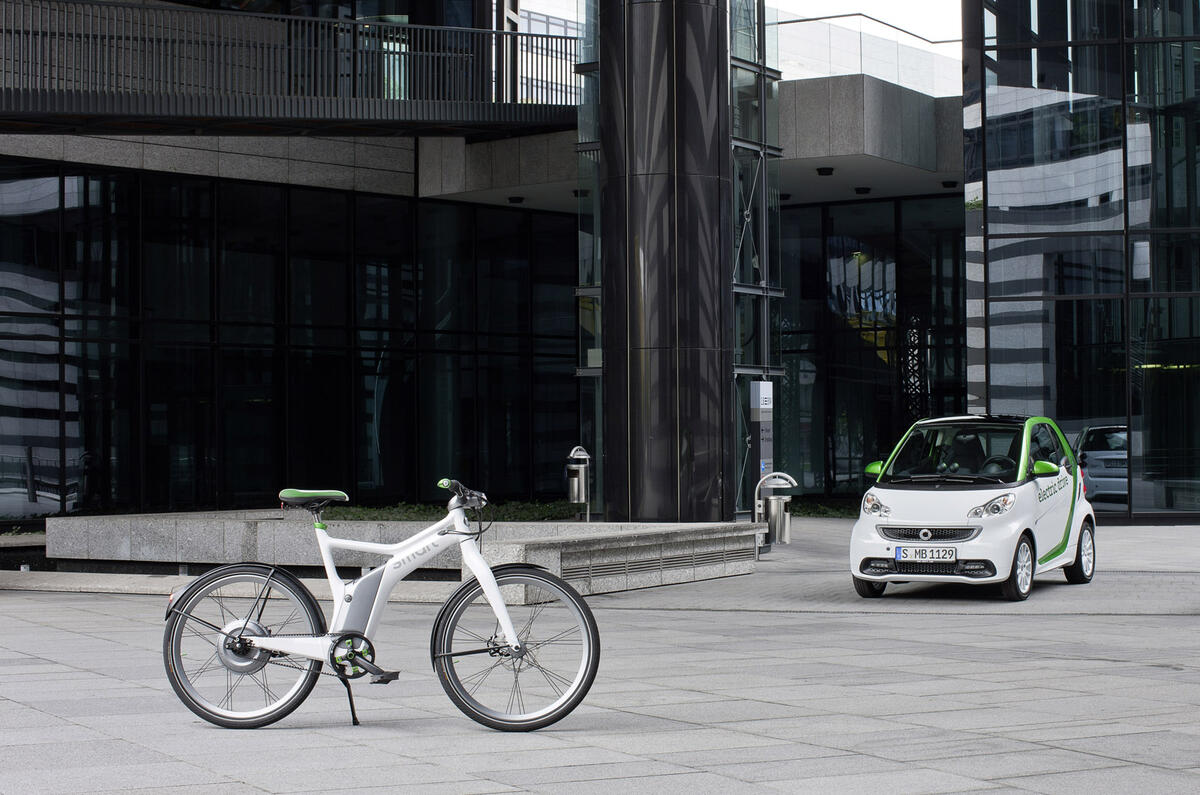
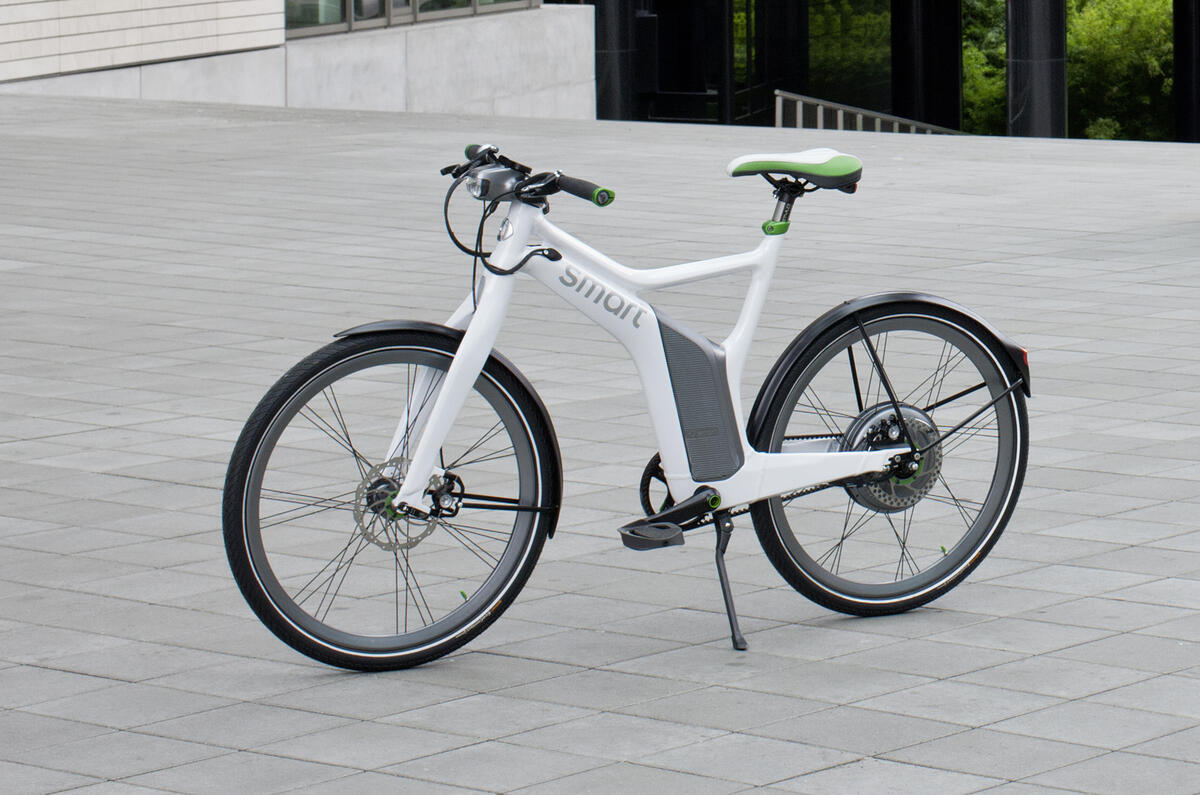
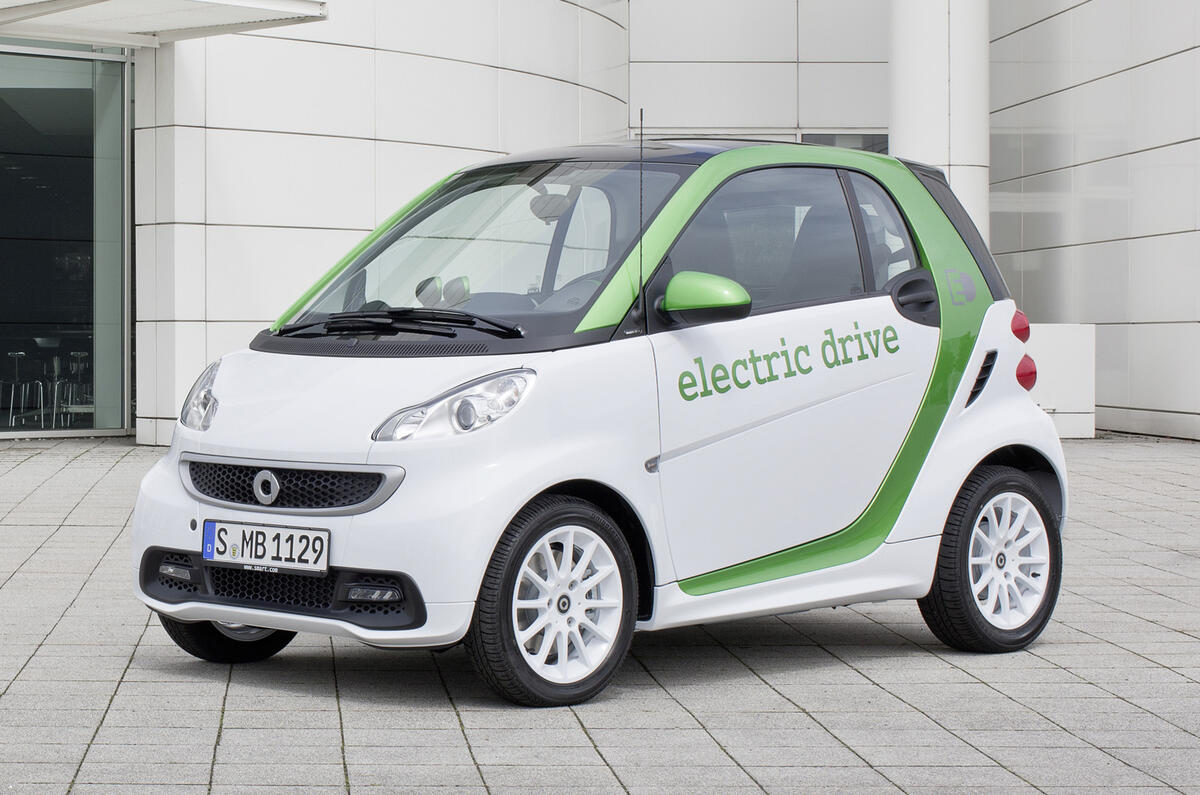
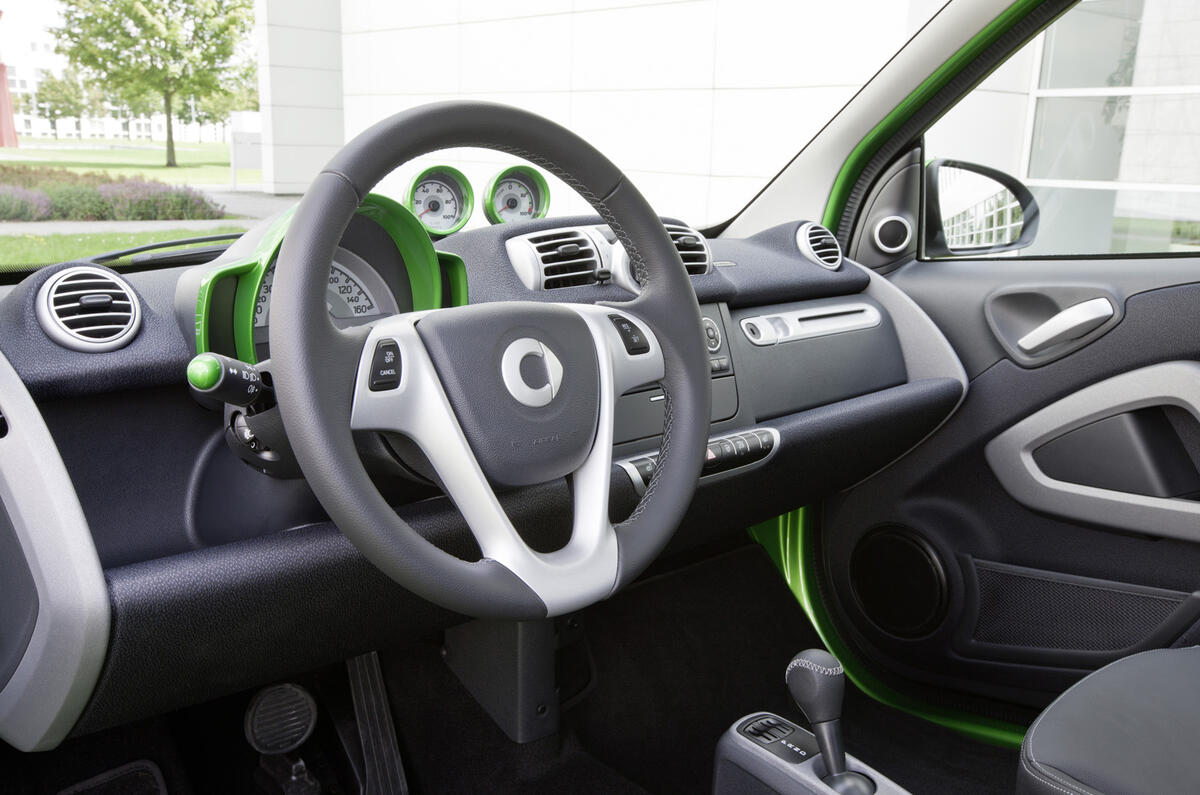
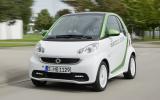
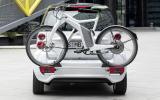

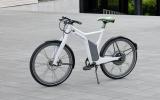
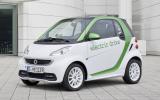
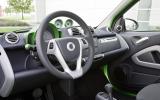



Add your comment